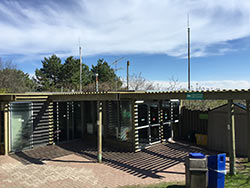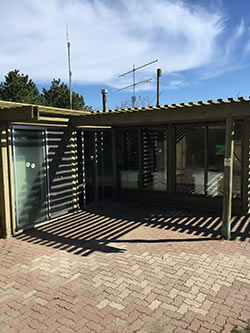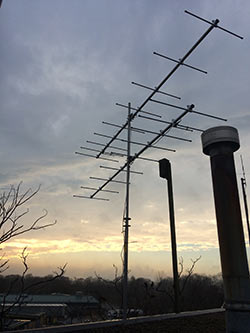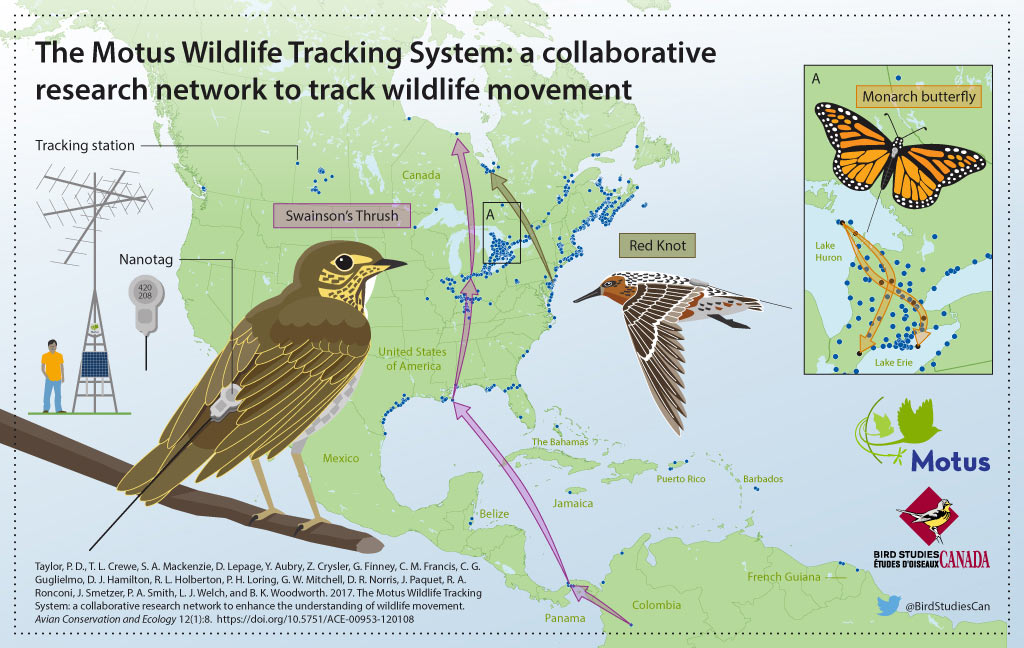Motus Wildlife Tracking System
What is it?
Have you been to the Zoo lately? If you have, you might have noticed what looks like a TV antenna on the roof of the First Aid Station, beside the Gorilla Climb Ropes Course. This antenna is actually part of a research program managed by Bird Studies Canada, known as the Motus Wildlife Tracking System (Motus). The antenna may seem unassuming, but by hosting a station, the Toronto Zoo is contributing to a powerful international research network used to track and study the migration of small animals.
Tracking the long distance movements of small animals poses a unique challenge for biologists. Traditional tracking methods, such as GPS tags, are often too large or heavy for small animals to carry, and some require recapture of the animal to retrieve data. Motus overcomes this challenge by using automated radio telemetry to trace the migratory paths of animals.
How does it work?
The Motus system is comprised of three key parts: radio tags which are attached to the animals, independent receiving stations, and a centralized database.
Radio tags are programmed to emit a signal on the same frequency as all the receivers in the network. Before a tag is attached to an animal, it must be “registered” to the Motus network. Each tag emits a unique series of radio signals which identifies the individual tag. The transmitter is then attached to an animal using a harness or other methods to make sure it’s secure and the animal can move comfortably. Once deployed the tags can be detected by any receiving station throughout the network since all receiving stations are programmed to “listen” on the same frequency.
Receiving stations are equipped with a power source, a receiver, and one or more antennas, which pick up the signal of animals tagged with a transmitter, and pass the data along to the central database. Data collected from these stations help create a map of the locations individual animals have been or where a population has migrated.
Why is this innovative?
The Motus system is an almost completely automated system. Where traditional radio tracking methods required humans to manually track animals either by foot, car, or plane, the stationary receiving towers of the Motus system detect any and all tagged animals that are nearby. This reduces human limitations since the receivers can operate 24 hours a day, 7 days a week. The reduction in required man power, the geographic scope of the Motus network, and the smaller, lighter design of the radio tags makes Motus a novel solution to some of the problems researchers encounter when studying small migratory organisms.
Why is the zoo involved?
Here at the Toronto Zoo we strive to be Canada’s leader in the preservation and protection of threatened and endangered species. We aim to educate and inspire guests to help us in the conservation of species that call Canada and other countries home. The Motus program can help us accomplish our goals by allowing us to help monitor, protect, and learn more about threatened migratory species. Our site allows us the unique opportunity to share this exciting new research with a broad audience, and expose our visitors to wildlife conservation work that they might not likely hear about otherwise.




Motus is a program of Bird Studies Canada in partnership with Acadia University and collaborating researchers and organizations. To learn more, visit: motus.org













